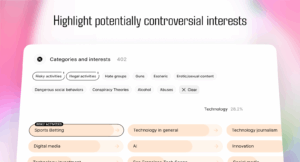Client Etiquette: How to Be a Better Design Client
Key Takeaways
- Understand and communicate your design preferences to your designer. This gives them a starting point and prevents frustration on both sides.
- Be considerate of your designer’s time and effort, providing thoughtful feedback and avoiding unrealistic turnaround times.
- Avoid a sense of entitlement. Remember that you are not the only client and the designer was hired for their expertise, so respect their professional judgment.
- Show gratitude and keep in contact with your designer. Regular communication and appreciation can foster a strong working relationship and better design outcomes.
In a previous article, I gave some tips for designers on how to make their clients happier. I want to continue along this line of thinking, but I want to focus on the reverse — how clients can make their designers happier. As they say, “it takes two to tango,” and designing is usually a two-way interplay between designer and client (unless the designer is the client). I’ve heard other creative professionals describe negative experiences and inconsiderate clients, which got me to thinking of my own experiences.
Of course, there are assertive ways to deal with unsavory, clientele but sometimes those methods aren’t always effective, and you can end up terminating the client/designer relationship instead of improving it. It isn’t solely up to the designer to keep this relationship in good standing; it’s also partially on the client themselves. Today, I will be sharing five essential tips to encourage better etiquette from clients when dealing with their designer.
Know What You Want
One of the most frustrating (and unfortunately common) things that a client can do is show up to the initial meeting without knowing what you want. Clients who schedule a meeting and show up without giving some basic thought to their design preferences are likely to end up disappointed with the initial meeting, and they’ve laid the groundwork for a frustrating experience for both parties involved.
Now, you don’t have to map out every painstaking detail, but you should at least be able to articulate a general direction for your designer, especially if you weren’t able to explain it over the phone, via email, or through whatever medium you used to communicate with them. Coming in with absolutely no idea is not only going to be frustrating for the designer, but there is also a chance that they might immediately consider you a “bad,” frustrating client, which rarely helps you get the thoughtful, meticulous design work that you need.
Yes, it is the designer’s job to help you achieve your goals, but it is hard to achieve them when they have no starting point. If you can’t comprise a short list of expectations and needs, then try bringing in examples to aid you in your explanations. Trust me, it will make things go a lot easier and prevent you from sitting there hemming and hawing during a period where you should be clearly articulating to your designer what you’re looking for.
Be Considerate
As clients get into the difficult, detail-oriented design decisions, some start to forget their consideration. As service providers, designers must maintain a passivity and open-mindedness to their customers, but this approach often gets misconstrued as an invitation to be overly critical of design work that’s often not even the finalized end product. This is often counterproductive and can lead to less focused design work that’s well short of its potential.
There are several ways in which client could remain considerate and foster high levels of productivity and communication. First, be thoughtful with your feedback and choose your words wisely. I’m not talking about pandering; I’m talking about the way you give feedback. A single piece of feedback could be expressed in a tactful, considerate, productive way, and it could also be expressed in a negative, unnecessarily-harsh manner. So, the next time you feel the need to critique a design, make sure your criticism is truly constructive. Otherwise, you may never get the work that you’re looking for, and you might shoulder part of the blame.
Being considerate with time is also important, and it can involve a a variety of things, including deadlines and contacts. Designers may not always work during normal business hours, but demanding a near-instant turnaround time is rarely a good idea, especially if you’re looking for thoughtful, quality work. A smart client will remain mindful of their designer’s schedule. You’d be surprised how easy it is to become a favorite client if you make a few gestures to accommodate your designer’s schedule.
Don’t Feel Entitled
Sometimes, clients can slip into a sense of self-entitlement, which can often rub hardworking designers the wrong way. This dynamic is a fairly rare occurrence, but it can cause substantial damage to the client/designer relationship. “The customer is always right” is a common, tried-and-true principle that most designers are happy to follow, but perhaps another statement to keep in mind is “The customer chose and hired a talented designer for work they could not do on their own.” This might foster a sense of balance within the client/designer dynamic. After all, a client can be fired just as easily as a designer.
As a client, the easiest way to shed any feelings of entitlement is to remember that you probably aren’t the only client, and — unless you’ve hired this designer full-time — you probably shouldn’t expect to always the number one priority. If this reality is kept in mind, you’ll likely get excellent work at a great value if you provide a little of your own patience and understanding.
Be Grateful
Paying a designer promptly is a great way to keep them fairly content, but if you really want to delight them, going above and beyond costs very little; all it takes is an expression of gratitude. Just saying “thank you” is further payment in itself, because it shows appreciation and acknowledgement. No one likes putting their skills and their passion into a project to hand off to someone who can’t even show them some a little bit of basic gratitude and recognition.
You don’t need to save your thanks for the very end of the project either. Thanking the designer at the initial acceptance of your project is a helpful sign that the relationship is going to work out. Sending some form of a gift or card is always appreciated, and don’t worry if your card is poorly-designed… that’s why you hired us.
Keep In Contact
After clients get what they want, many have a habit of falling off the face of the earth without warning. Designers understand that you’re busy, and they usually do plan on propelling the project themselves, but dropping in by the office, calling or emailing to see how the project is coming along is recommended, and additional feedback or brainstorming can only help your designs reach their potential. Of course, that doesn’t mean extremely frequent calls, meetings, or visits, but keeping in contact is a great way to assure great work, make deadlines, and build a good relationship.
When the project is finally done, that doesn’t mean you should never contact them again. Nobody knows your designs and your preferences as well as the person who tailored them to your needs. Keep in contact with your designer, even if you don’t have immediate plans to work with them again. You don’t need to have constant correspondence, but you can keep them up-to-date on the success of the design. If you had them design something that will be used for your soon to be launched website or business, invite them to the launch party or grand opening. If it turns out that you need additional design work, your designer can really hit the ground running if you’ve kept in contact.
Conclusion
As a client, you have just as much power as the designer when it comes to improving (or damaging) a collaborative relationship. Making sure that your designer is happy can help foster great design work, quick turnarounds, and perhaps more. Put yourself in the shoes of your designer and think about how you would want a client relationship to be. Good client etiquette can definitely make you the ideal client, and it can make your design work shine as well.
Frequently Asked Questions on Design Client Etiquette
What is the importance of design etiquette in a client-designer relationship?
Design etiquette is crucial in a client-designer relationship as it sets the tone for effective communication, mutual respect, and understanding. It helps in setting clear expectations, avoiding misunderstandings, and ensuring a smooth workflow. A good design etiquette can lead to a successful project outcome, a satisfied client, and a strong, long-term professional relationship.
How can I be a better design client?
Being a better design client involves clear communication, respect for the designer’s expertise, and understanding the design process. Provide clear and concise feedback, respect deadlines, and avoid micromanaging. Remember, a good client-designer relationship is a partnership, and your input is as valuable as the designer’s skills.
What should I avoid doing as a design client?
As a design client, avoid vague instructions, last-minute changes, and unrealistic expectations. Respect the designer’s time and expertise. Don’t expect them to work for free or at a significantly reduced rate. Remember, good design takes time and effort, and designers should be compensated fairly for their work.
How can I effectively communicate my design ideas to the designer?
Effective communication involves being clear, concise, and specific about your design ideas. Use visual examples if possible, and provide constructive feedback. Avoid using jargon unless you’re sure the designer understands it. Remember, it’s a collaborative process, and your input is crucial to the project’s success.
How can I provide constructive feedback to the designer?
Constructive feedback is specific, focused, and objective. Instead of saying “I don’t like it,” explain why you don’t like it. Is it the color scheme? The font? The layout? Providing specific feedback helps the designer understand your preferences and make the necessary adjustments.
How can I respect the designer’s time and expertise?
Respect the designer’s time by setting realistic deadlines, providing timely feedback, and avoiding unnecessary revisions. Respect their expertise by trusting their judgment and not micromanaging the design process. Remember, you hired them for their skills and experience, so let them do their job.
What should I expect from the design process?
The design process involves several stages, including research, brainstorming, sketching, prototyping, and refining. It’s a collaborative process that requires your input and feedback. Expect revisions and adjustments along the way, and remember that good design takes time.
How can I set clear expectations for the project?
Setting clear expectations involves providing a detailed project brief, setting realistic deadlines, and discussing the budget upfront. Be clear about your design preferences, but also be open to the designer’s suggestions. Remember, it’s a collaborative process, and clear communication is key to its success.
How can I build a strong, long-term relationship with the designer?
Building a strong, long-term relationship with the designer involves mutual respect, clear communication, and understanding. Respect their time and expertise, provide constructive feedback, and pay them fairly. Remember, a good client-designer relationship is a partnership, and your actions can significantly impact its success.
What are some common mistakes clients make in the design process?
Common mistakes include vague instructions, unrealistic expectations, last-minute changes, and lack of respect for the designer’s time and expertise. Avoid these mistakes by being clear, realistic, respectful, and understanding. Remember, good design is a collaborative process, and your actions can significantly impact its success.
Gabrielle is a creative type who specializes in graphic design, animation and photography.








